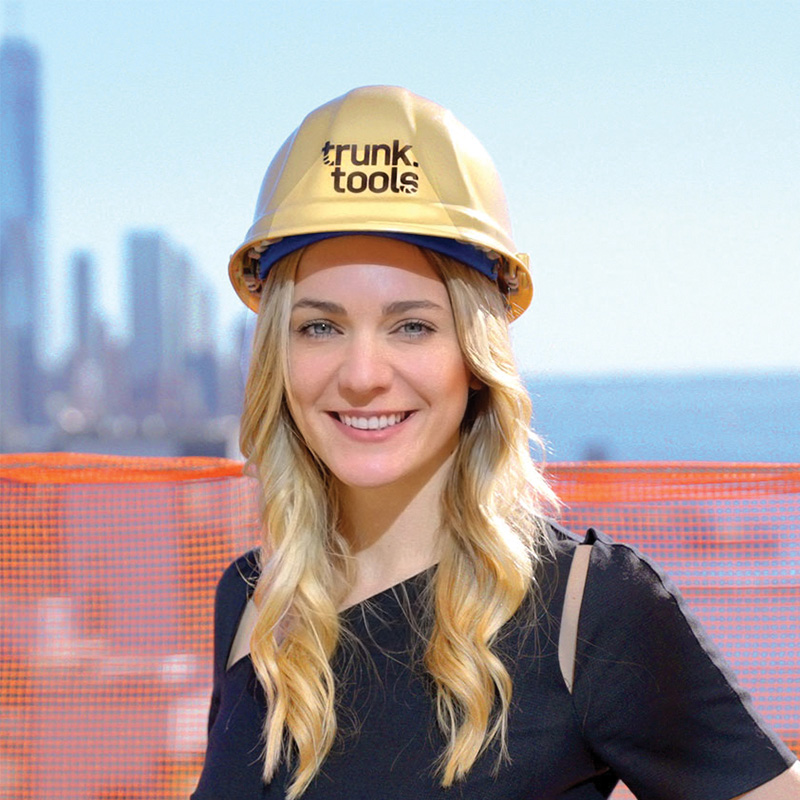STOBG’s Innovation team is constantly partnering with change-makers who are helping advance the way we build. STOBG’s chief innovation officer, Rob Leon, recently interviewed one of those visionaries: Sarah Buchner, CEO of Trunk Tools, a business that was founded out of real construction practice and is now at the forefront of AI for construction. In their conversation, Buchner describes how a deadly moment on the jobsite, a PhD, and a love for problem-solving translated into solutions that are revolutionizing project execution behind the scenes.



Q&A with Rob Leon and Sarah Buchner
Rob Leon (RL): Let’s start at the beginning. What was the problem you saw, and how did you decide to solve it?
Sarah Buchner (SB): Like most people, I didn’t land in construction on purpose. I was brought into the field as a teenager, my dad was a carpenter, and the family needed more income. I became a superintendent and spent about 15 years on-site, eventually running a $400 million high-risk job. One day, we had a fatality. It shook me. I felt responsible. That moment made me rethink everything, and that’s when I moved into software. First it was a safety app. Then a PhD. And that led to a bigger realization: construction has more data than most industries, but we don’t use it. A major company backed my research and said, “We’re sitting on billions of data points. Do something with them.” That was the spark.
RL: We always say this industry is incredibly fractured, especially when it comes to data. Every project is a reset: new people, new tools, new problems. How did your experience in the field shape the way you approached it?
SB: I remember lugging a backpack full of printed drawings across sites. Everything was paper. Even now, data lives in silos: PDFs, RFIs, specs, drawings, all spread across 10, 20 different systems, constantly updating. You can’t make progress with data like that. So, I focused on how we could structure it. Large language models were evolving, and the timing clicked—we finally had the technology to match the problem we’ve had for decades.
RL: How will AI and solutions like Trunk Tools change that?
SB: I don’t think the silos are going away. They exist for a reason: risk, liability, margins. But what’s coming is agent-based collaboration. Instead of one massive AI model, you’ll be augmented by dozens of small agents. One will handle RFIs. Another will translate drawings. One might just tell you what to eat for dinner. It’s intelligence augmentation, not replacement. And the field is where this tech matters most. It’s where jobs fall behind, where budgets crack, where rework happens. Our tools are built to serve that frontline.
RL: That makes sense. So, who’s your best customer today?
SB: The people in hard hats. Supers, PMs, even subs. That’s where the chaos lives, and that’s where we can make the most impact. I’m biased; I spent my whole career in the field. But that’s also where you lose money. Not in estimates. Not in pre-con. In the real-time decision-making when things go sideways.
RL: Tell us about the technical side. AI makes some folks nervous because of the use of their data and their clients’ data—not everyone understands how models are trained and how data is anonymized.
SB: That’s valid. But we’re careful. We build models for specific tasks, like recognizing if a PDF is an RFI or a spec. Doesn’t sound sexy, but it’s foundational. And the data we train on? It’s de-identified and anonymized. Think of it like a job-specific brain: it learns what it needs for that one project, and then it disappears. We call them “AI brains.” You train it. It solves. It retires. The goal is utility, not creepiness.
RL: Can you give an example of when it just worked?
SB: One of my favorites: a superintendent was in a contract standoff with a subcontractor. It was tense. The sub claimed something wasn’t in the contract. The super quietly texted TrunkText, and it pulled up the clause. He turned his phone around mid-meeting and said, “Actually, it is.” Game over. That moment was everything. It wasn’t flashy, but it was decisive. It gave someone in the field the clarity they needed, instantly.
RL: What is the next problem you are tackling?
SB: Scale. We’re rolling out a new agent that can predict RFIs before they even happen. No human required. That alone could save thousands of hours and untold rework. Globally, over a trillion dollars is lost in construction annually due to data issues. If we can clean that up, even a little, it’s a massive win. And that doesn’t even touch the sustainability angle.
RL: Absolutely. Thanks for sharing all of this. We’re excited to keep building together.
SB: Likewise. I can’t wait to see what we do next.
